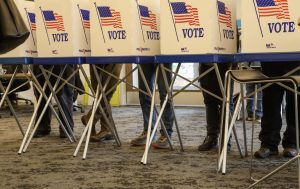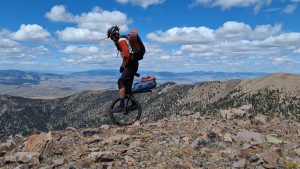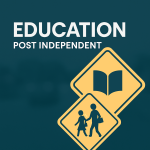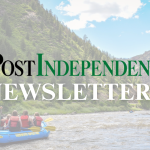A last-minute voter guide for the 2025 Colorado election

Chris Dillmann/Vail Daily
Whether you’ve filled out your ballot but don’t know what to do with it, haven’t got your ballot or need to register to vote, there’s still time to make your voice heard in this year’s election.
As of noon on Monday, Nov. 3, 855,367 ballots had been cast, according to the Colorado Secretary of State’s Office. That represents just over 20% of the more than 4.1 million active voters registered in Colorado as of October.
Coloradans have until 7 p.m. on Tuesday — Election Day — to register to vote and cast a ballot. Here’s what you need to know:
Where to drop your ballot, receive a ballot or register to vote
If you’ve filled out your ballot and are still holding onto it, it’s too late to mail it in. You’ll want to find a ballot drop box, which will be open until 7 p.m. on Tuesday. You can go to GoVoteColorado.com and enter your address to see nearby drop box locations.
If you’re registered to vote but are missing a ballot, you can go to an Election Day voting site and cast a ballot in person. If you haven’t yet registered to vote but are eligible to, you can also do so at an in-person vote site before receiving and casting your ballot.
Those sites can also be found by entering your address at GoVoteColorado.com. Once you’ve cast your ballot, you can track its status at ColoradoBallotTrax.com.
Coloradans waiting in line at a voting site to cast a ballot, or to register to vote and receive a ballot, can do so as long as they are in line by 7 p.m. on Tuesday.
You’ll also need to provide a valid ID, such as your Colorado driver’s license or ID card number or the last four digits of your social security number. A full list of acceptable forms of ID can be found at ColoradoSOS.gov/pubs/elections/vote/acceptableFormsOfID.html.
What you’re voting on
2025 is what’s considered an off-year election, meaning no national races are occurring.
Control of Congress will be decided in next year’s midterm elections, when nearly a third of all U.S. Senate seats — and all 435 seats in the House of Representatives — will be contested.
In addition to local races, like school board and city council, Colorado has two statewide ballot measures for voters to decide on this year, Propositions MM and LL. Both have to do with increasing tax funding for the Healthy School Meals for All Program, which was first approved by voters in 2022.
The program currently provides free school breakfast and lunch to all children regardless of income. Unless more funding is approved, the program will have to limit free meals to only certain students starting next year.
Proposition MM would raise income taxes on households making over $300,000 or more by limiting standard and itemized tax deductions. That would raise as much as $95 million more every year for the free meals program.
The tax increase would impact about 6% of Colorado households that file taxes, and translates to an average annual increase of $327 for single filers and $574 increase for joint filers.
Proposition LL would allow the state to keep and spend excess revenue for the school meals program. Under the Taxpayer’s Bill of Rights, or TABOR, when programs take in more tax revenue than was initially projected, the state must ask voters if it can keep that excess revenue.
Colorado lawmakers, during an August special session, also added language to the ballot that allows the state to use excess tax funding to backfill federal cuts to the Supplemental Nutrition Assistance program, or SNAP.
As part of the sweeping tax and spending cut law passed by congressional Republicans this summer, the federal government is poised to scale back its share of funding for the anti-hunger program based on each state’s payment error rate. That could cost Colorado as much as $175 million a year, according to state officials.
MM and LL: Arguments for and against
Proponents of the measures say the additional revenue is needed to ensure the school meals program can keep up with demand and continue serving all students.
More funding will also allow the state to fulfill two other components of the program that have stalled, one being higher pay for school breakfast and lunch staff, and the other being a grant program to help school districts purchase locally grown food from Colorado farmers.
While Propositions MM and LL are largely backed by Democrats and anti-hunger groups, some conservatives are opposed to the measures, arguing it will raise taxes at a time when the cost of living and economic pressures are challenging more households.
State Republican lawmakers, who largely voted against sending the ballot initiatives to voters this year, typically oppose efforts to skirt TABOR’s spending cap, which they say leads to runaway government spending.
A report last month by the free-market economic policy think tank Common Sense Institute also makes the case that neither ballot measure addresses the free meals program’s spending levels. It argues that state lawmakers have focused on raising taxes instead of reducing spending.
Live election results will be posted online at postindependent.com/election beginning after 7 p.m. on Tuesday.

Support Local Journalism

Support Local Journalism
Readers around Glenwood Springs and Garfield County make the Post Independent’s work possible. Your financial contribution supports our efforts to deliver quality, locally relevant journalism.
Now more than ever, your support is critical to help us keep our community informed about the evolving coronavirus pandemic and the impact it is having locally. Every contribution, however large or small, will make a difference.
Each donation will be used exclusively for the development and creation of increased news coverage.










